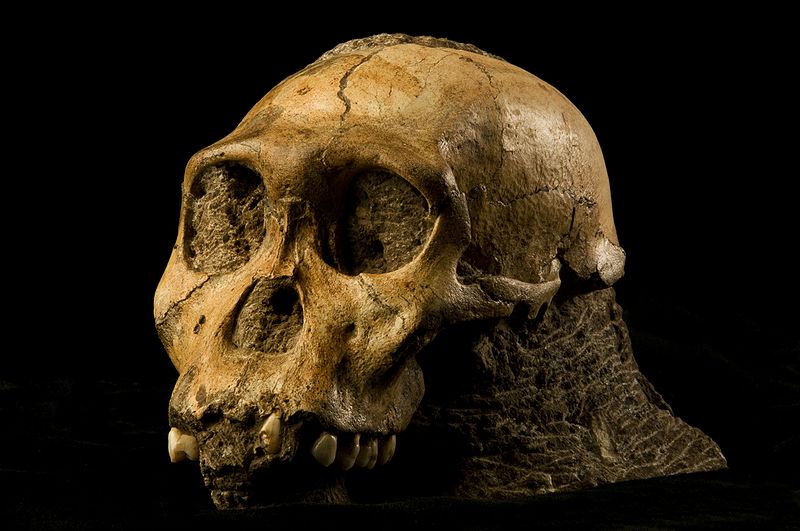Science News
Human Ancestor Round-Up

Human evolution is a fascinating, deeply competitive field of study. Often new findings disrupt others, pushing research out of the limelight or out of textbooks. This week stirred the pot further with several new studies popping up about early human ancestors and human interbreeding.
Today’s issue of Science has no less than five papers on Australopithecus sediba, a primitive hominin that existed around the same time early Homo species first began to appear on Earth. We reported on the initial finding of these fossils last year.
The well-preserved fossils appear to be 1.977 million years old. Their surprising age and some of their features lead some researchers, including the main researcher on each paper, Lee Berger, to believe that Au. sediba is the best candidate as an ancestor to the Homo genus. Displaying both primitive characteristics as well as more modern, human-like traits, the fossils are casting doubt on some long-standing theories about human evolution, including the notion that early human pelvises evolved in response to larger brain sizes. And there is also some new evidence suggesting that Au. sediba may have been a tool-maker.
New Scientist reports that these fossils could be the halfway point between apes and modern humans and the New York Times writes that:
Dr. Berger’s claim, if accepted, would radically redraw the present version of the human family tree, placing the new fossils in the center. The new species, in his view, should dislodge Homo habilis… as the most likely bridge between the australopithecenes and the human lineage.
Earlier in the week, the Proceedings of the National Academy of Sciences published a paper claiming that anatomically modern humans interbred with more archaic hominin forms while in Africa.
Like the recent study comparisons between the Neanderthal and human genomes, this current study looked at DNA. Unlike those previous studies, the authors of the current paper didn’t have the luxury of other ancient genomes.
"Our work is different from the research that led to the breakthroughs in Neanderthal genetics," explains lead author Michael Hammer of the University of Arizona. "We couldn't look directly for ancient DNA that is 40,000 years old and make a direct comparison."
To get past this hindrance, Hammer's team followed a computational and statistical approach. "Instead, we looked at DNA from modern humans belonging to African populations and searched for unusual regions in the genome."
Nature News describes how the researchers looked at two tribes whose ancestry never left Africa--
meaning they would have avoided the genetic bottleneck effect that usually occurs with migration. This means the groups show particularly high genetic diversity, which makes their genomes more likely to have retained evidence of ancient genetic mixing.
“It could be that this represents what's left of a more extensive archaic genetic content today,” Hammer continues. “Many of the sequences we looked for would be expected to be lost over time. Unless they provide a distinct evolutionary advantage, there is nothing keeping them in the population and they drift out.”
"We think there were probably thousands of interbreeding events," Hammer said. "It happened relatively extensively and regularly."
Could this early interbreeding have led to the genetic similarities between humans and Neanderthals? Another new paper hints at that, according to Science News:
New mitochondrial DNA analyses indicate that Neandertals didn’t occasionally interbreed with Stone Age humans… If nuclear DNA lines leading to Neandertals and Europeans are older than corresponding mitochondrial DNA lines, then a long period of shared ancestry could explain why Neandertals and today’s Europeans share some nuclear DNA, the researchers propose online August 24 in the American Journal of Physical Anthropology.
To be sure, more studies to come…
Photo by Brett Eloff. Courtesy Profberger and Wits University